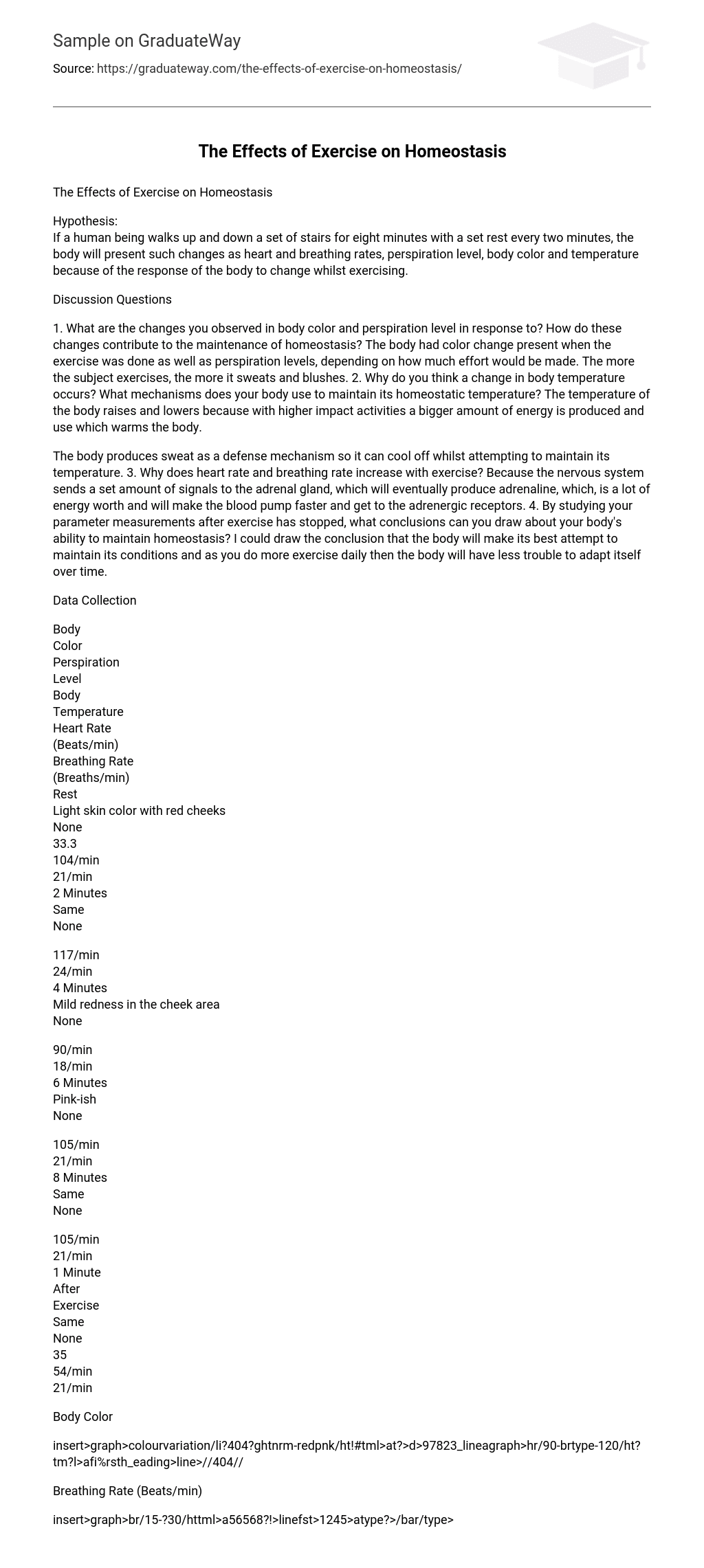Hypothesis:
If a human being walks up and down a set of stairs for eight minutes with a set rest every two minutes, the body will present such changes as heart and breathing rates, perspiration level, body color and temperature because of the response of the body to change whilst exercising.
Discussion Questions
1. What are the changes you observed in body color and perspiration level in response to? How do these changes contribute to the maintenance of homeostasis? The body had color change present when the exercise was done as well as perspiration levels, depending on how much effort would be made. The more the subject exercises, the more it sweats and blushes. 2. Why do you think a change in body temperature occurs? What mechanisms does your body use to maintain its homeostatic temperature? The temperature of the body raises and lowers because with higher impact activities a bigger amount of energy is produced and use which warms the body.
The body produces sweat as a defense mechanism so it can cool off whilst attempting to maintain its temperature. 3. Why does heart rate and breathing rate increase with exercise? Because the nervous system sends a set amount of signals to the adrenal gland, which will eventually produce adrenaline, which, is a lot of energy worth and will make the blood pump faster and get to the adrenergic receptors. 4. By studying your parameter measurements after exercise has stopped, what conclusions can you draw about your body’s ability to maintain homeostasis? I could draw the conclusion that the body will make its best attempt to maintain its conditions and as you do more exercise daily then the body will have less trouble to adapt itself over time.
Data Collection
Body
Color
Perspiration
Level
Body
Temperature
Heart Rate
(Beats/min)
Breathing Rate
(Breaths/min)
Rest
Light skin color with red cheeks
None
33.3
104/min
21/min
2 Minutes
Same
None
117/min
24/min
4 Minutes
Mild redness in the cheek area
None
90/min
18/min
6 Minutes
Pink-ish
None
105/min
21/min
8 Minutes
Same
None
105/min
21/min
1 Minute
After
Exercise
Same
None
35
54/min
21/min
Body Color
insert;graph;colourvariation/li?404?ghtnrm-redpnk/ht!#tml;at?;d;97823_lineagraph;hr/90-brtype-120/ht?tm?l;afi%rsth_eading;line;//404//
Breathing Rate (Beats/min)
insert;graph;br/15-?30/httml;a56568?!;linefst;1245;atype?;/bar/type;





